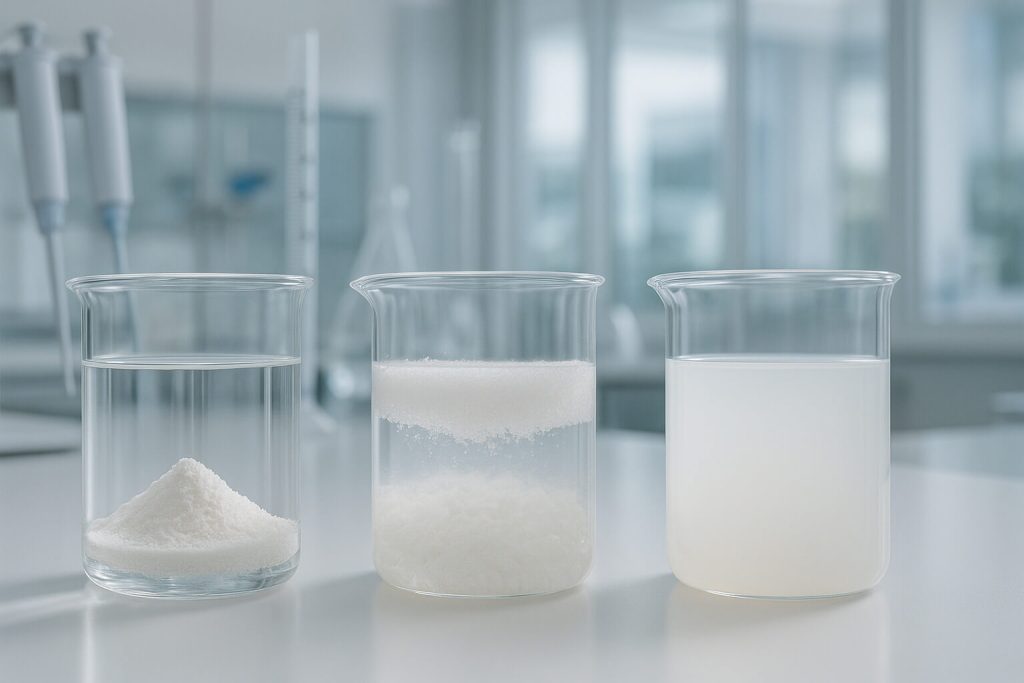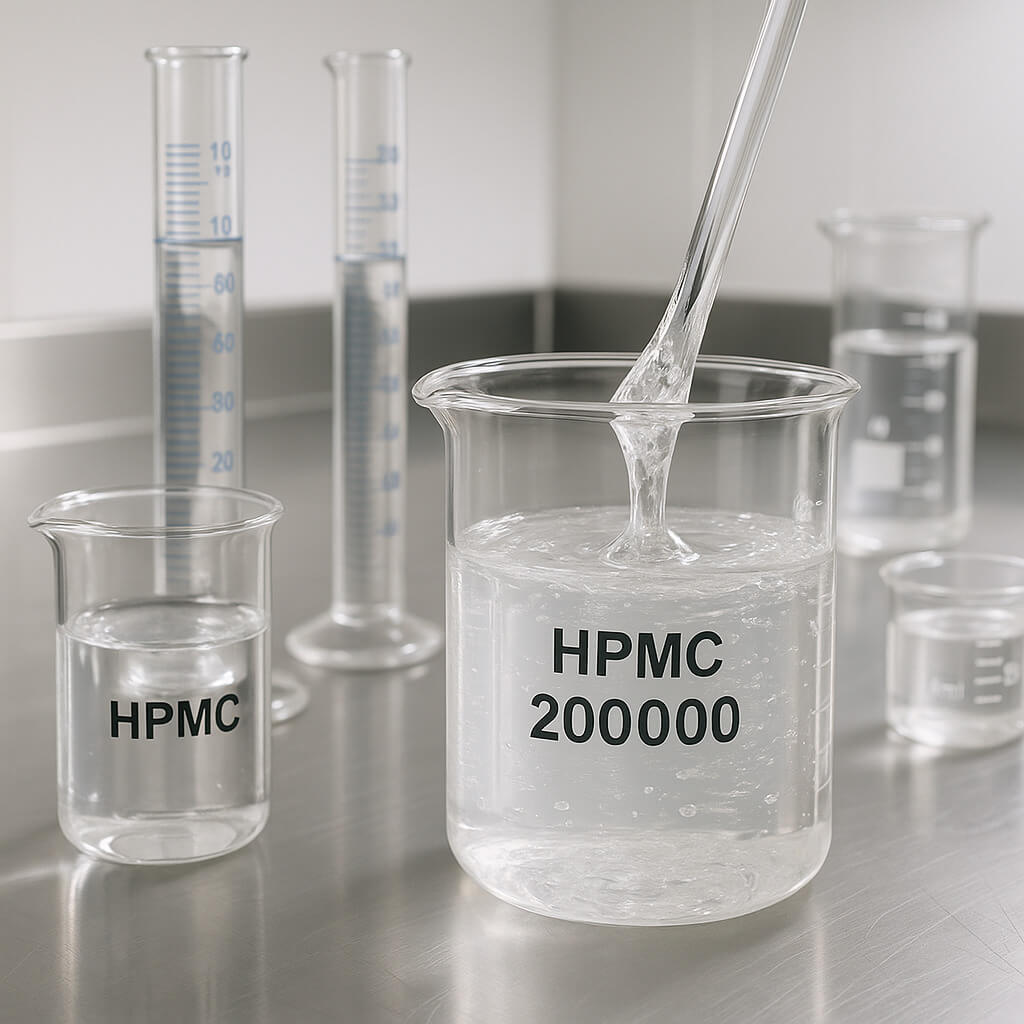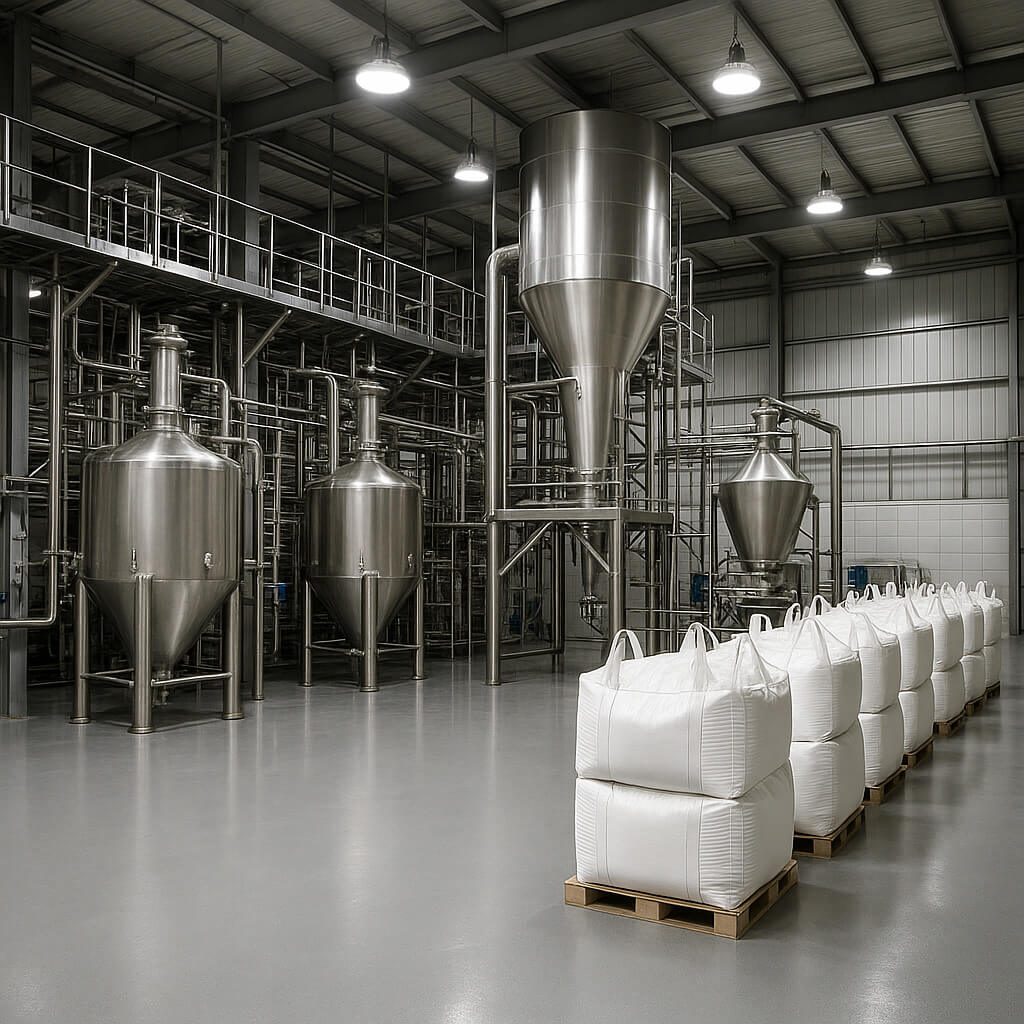Understanding the different HPMC grades and their uses is crucial for industries looking to optimize their formulations and applications. Hydroxypropyl Methylcellulose (HPMC) is a versatile compound employed across various sectors, including pharmaceuticals, construction, and food. In this article, we will explore the unique characteristics of each HPMC grade, their applications, and why selecting the right one is essential for business success.

1. ¿Qué son los grados de HPMC y por qué son importantes?
HPMC grades refer to the various forms of Hydroxypropyl Methylcellulose, distinguished by their viscosity, solubility, and other physical properties. But here’s the kicker: the grade of HPMC you choose can dramatically impact your product’s performance and effectiveness.
Understanding HPMC grades is more than just a matter of preference; it plays a vital role in large-scale industrial applications. Each grade is formulated to satisfy specific needs within particular sectors. For example, in the pharmaceutical industry, HPMC is used as an excipient in drug formulations, crucial for controlling the release mechanisms of active ingredients. Similarly, in construction, HPMC is incorporated as a binder in tile adhesives and cement, influencing workability and drying times.
Moreover, industries are highly competitive, and leveraging the right materials can give your business a needed edge. For decision-makers, choosing the appropriate HPMC grade can determine the overall effectiveness of products and, ultimately, customer satisfaction. Understanding these nuances is essential for purchasing managers and other stakeholders tasked with sourcing materials.
The impact of selecting the wrong HPMC grade often leads to suboptimal performance, increased costs, or even project delays. Hence, this knowledge isn’t just academic—it’s practical, aligning with the operational goals of businesses in diverse fields.
| Grado HPMC | Viscosity Range (cP) | Aplicaciones comunes |
|---|---|---|
| Bajo | 100-200 | Productos alimenticios, cosméticos |
| Medio | 200-800 | Productos farmacéuticos, recubrimientos |
| Alto | 800+ | Construction, advanced formulations |
2. What Are the Different Types of HPMC Grades?
The world of HPMC grades isn’t as straightforward as it seems. There are three primary categories: Low, Medium, and High viscosity grades. Ready for the good part? Each category serves different functions and applications based on viscosity levels and solubility properties.
Low viscosity HPMC grades, generally ranging from 100 to 200 cP, are commonly used in less viscous formulations like food products, where the thickening effect is gentle. In cosmetic formulations, they help achieve that desired silky texture without overpowering the formula.
On the other hand, Medium viscosity HPMC grades, which can range from 200 to 800 cP, find a significant application in pharmaceuticals. They act as controlled release agents, ensuring that active ingredients are dispensed at a consistent rate. For example, HPMC can be formulated into tablets and capsules that dissolve gradually in the gastrointestinal tract, enhancing bioavailability.
High viscosity grades, typically over 800 cP, are essential for demanding applications like construction materials. They improve the workability of cement and drywall compounds and reduce water demand without compromising strength. This versatility is crucial for construction professionals who need reliable materials that enhance performance and structural integrity.
| Grado HPMC | Viscosity (cP) | Usos comunes |
|---|---|---|
| Baja viscosidad | 100-200 | Alimentos, cosméticos |
| Viscosidad media | 200-800 | Pharmaceuticals, personal care products |
| Alta viscosidad | 800-3000 | Cement additives, tile adhesives |
3. How Do HPMC Grades Impact Performance in Various Industries?
You’re probably wondering how HPMC grades can significantly influence the performance of products across different industries. This is where it gets interesting! The right HPMC grade can be the difference between a product that excels and one that fails to meet market demands.
In the pharmaceutical industry, for instance, selecting the appropriate HPMC grade is critical for ensuring therapeutic efficacy. Formulators often rely on high viscosity grades to achieve slow, controlled drug release. This can be particularly beneficial for medications that require sustained action, allowing patients to maintain stable drug levels in their systems.
Meanwhile, in the construction industry, HPMC plays a pivotal role in determining the workability of materials. High viscosity HPMC grades improve the adhesion and application properties of tile adhesives, enabling easier handling on-site. Additionally, they help enhance the water retention of cement-based formulations, prolonging the workability period.
In the food sector, low viscosity HPMC grades provide thickening and stabilizing properties in products like sauces and dressings. They help improve texture, ensuring viscosity levels are maintained throughout the product’s shelf-life. This consistency is vital for consumer satisfaction, particularly in ready-to-eat meals where quality is key.
| Industria | Preferred HPMC Grade | Beneficios clave |
|---|---|---|
| Productos farmacéuticos | Alta viscosidad | Controlled release, stability |
| Construcción | Alta viscosidad | Improved adhesion, water retention |
| Alimentos y bebidas | Baja viscosidad | Thickening, improved texture |
4. What Factors Should Be Considered When Choosing HPMC Grades?
Choosing the right HPMC grade isn’t just about knowing the types; it’s also about understanding the factors influencing that choice. What’s the real story? Several parameters need to be evaluated to ensure optimal results.
First, consider the viscosity requirements of your application. Each industry has specific viscosity thresholds that must be met for the product to perform effectively. For example, a low viscosity HPMC might suffice for food applications, while a high viscosity grade may be necessary for pharmaceuticals or construction.
Next up is solubility. Not all HPMC grades dissolve evenly in water; some grades might require special conditions to ensure complete solvation. Understanding your formulation’s water requirements can help avoid potential challenges later in the production process.
Compatibility with other materials is another crucial consideration. Mixing different grades can yield unexpected results, which could complicate processes and affect the final product. Therefore, performing compatibility tests is essential to ensure all components blend seamlessly.
Finally, don’t forget about environmental factors such as temperature and humidity, which could influence the behavior of HPMC in formulations. Tailoring your selection to these variables will vastly improve your results.
| Factors to Consider | Descripción |
|---|---|
| Requisitos de viscosidad | Must meet specific standards for effective use |
| Solubilidad | Not all grades dissolve uniformly |
| Material Compatibility | Ensures smooth blending and performance |
| Condiciones ambientales | Temperature and humidity can affect behavior |
5. How to Determine the Right HPMC Grade for Your Product?
The determination of the appropriate HPMC grade isn’t merely a guessing game; it requires a strategic approach. But here’s the kicker: taking a systematic approach can lead you to the right choice.
Start by assessing your product’s specific needs. What viscosity is required? What are the primary applications? Collecting this data will form the foundation of your selection process.
Next, reach out to suppliers for technical data sheets. These documents provide essential information regarding each HPMC grade, including viscosity, solubility, and ideal applications. Having this knowledge at your disposal will make it much easier to narrow down your options.
Once you have a shortlist, consider conducting small-scale trials. Testing different grades under controlled conditions will allow you to evaluate their performance in real-world applications. It’s also prudent to consult with industry experts. Their insights and experiences can highlight factors you may have overlooked.
Finally, weigh the costs involved. Some HPMC grades may carry a premium due to their specialized nature. However, don’t just look at the upfront costs. Consider the total cost of ownership, which includes production impacts and potential returns.
| Determination Steps | Descripción |
|---|---|
| Assess Product Needs | Identify viscosity and application requirements |
| Consult Technical Data | Obtain information from suppliers |
| Conduct Trials | Test various grades in controlled conditions |
| Seek Expert Opinion | Get insights from industry professionals |
| Evaluate Costs | Consider total cost of ownership, not just upfront price |
6. What Are the Common Misconceptions About HPMC Grades?
In any field, misconceptions can lead to costly mistakes. So what’s the deal? When it comes to HPMC grades, several myths can cloud judgment and lead industries astray.
One common misconception is that all HPMC grades are interchangeable. This belief can lead to significant errors in product formulations, as each grade possesses unique properties tailored for specific functions. For instance, assuming a medium viscosity grade will suffice in a high-strength construction application could result in product failure.
Another myth posits that higher viscosity automatically equates to better performance. This is misleading since the appropriate viscosity depends on the specific application and the formulation requirements. Simply opting for the highest viscosity can lead to unwanted characteristics, such as reduced flow or application difficulties.
Furthermore, there’s the belief that HPMC is a one-size-fits-all solution. In reality, different industries demand tailored solutions, and without thorough consideration, product developers risk underperforming or presenting products that miss the mark.
Finally, some believe that HPMC grades are only relevant in the pharmaceutical industry. This myth ignores the vast array of applications across sectors like construction, food, and cosmetics, where proper selection could enhance performance and quality.
| Common Misconceptions | Explicación |
|---|---|
| Interchangeability | Each grade has unique properties |
| Higher Viscosity = Better | Depends on specific application needs |
| One-Size-Fits-All | Different industries require tailored HPMC solutions |
| HPMC is Just for Pharma | Used in various sectors beyond pharmaceuticals |
7. How Are HPMC Grades Produced and What Are Their Sources?
The production process of HPMC grades is integral to understanding their quality and performance. What’s intriguing here is the complexity of manufacturing that leads to the varying characteristics of each grade.
HPMC is derived from cellulose, which is subjected to chemical modification. The process begins with the extraction of cellulose from plant sources, typically wood pulp. Following extraction, the cellulose undergoes etherification, where hydroxypropyl and methyl groups are introduced to form HPMC. This chemical transformation ensures that the properties suit specific industrial needs.
Key suppliers often provide detailed information regarding their sourcing methods and quality control processes. Understanding these practices is paramount for purchasing managers looking to establish reliable supply chains. It’s essential to partner with suppliers that adhere to rigorous standards, ensuring that the HPMC grades supplied meet the necessary specifications for your industry.
Moreover, sustainability is becoming increasingly important. Suppliers are now focusing on environmentally friendly methods of HPMC production. This includes sourcing cellulose from sustainable forest management practices and using eco-friendly solvents during manufacturing, which aligns with the growing demand for environmentally conscious products.
| Proceso de producción de HPMC | Key Steps |
|---|---|
| Extracción de celulosa | Sourced from wood pulp |
| Eterificación | Introducción de los grupos hidroxipropilo y metilo |
| Control de calidad | Ensuring grades meet industry standards |
| Sustainable Sourcing | Métodos de producción ecológicos |
8. What Are the Best Practices for Storing and Handling HPMC?
Once you have sourced the correct HPMC grade, proper storage and handling become vital to maintain its quality. Are you ready to learn the best practices?
Firstly, HPMC should be stored in a cool, dry environment. Exposure to moisture can lead to clumping, affecting its performance in formulations. To combat this, always ensure the packaging is sealed tightly, protecting it from environmental conditions that could compromise integrity.
Temperature control is also crucial. Ideally, HPMC should be stored at temperatures between 15°C and 25°C. Extreme temperatures can alter viscosity and solubility, impacting the efficacy of the grade when used in formulations.
When handling HPMC, it’s essential to minimize dust generation. This not only prevents contamination but also ensures worker safety. Using appropriate personal protective equipment (PPE) is advisable when transferring HPMC from one container to another.
Lastly, keep an eye on shelf-life. Each HPMC grade will come with a specified shelf-life, after which its properties may begin to deteriorate. Regularly monitoring inventory based on shelf-life considerations helps avoid subpar products.
| Storage and Handling Tips | Key Practices |
|---|---|
| Temperature Control | Store between 15°C and 25°C |
| Moisture Protection | Keep packaging sealed to prevent exposure |
| Minimize Dust | Use PPE during transfer of materials |
| Monitor Shelf-Life | Regular inventory checks |
9. How to Implement HPMC Grades in Your Production Process?
Successfully incorporating HPMC grades into your production process requires strategic planning and execution. To get started, you need a clear understanding of the formulation methods. This is where it gets interesting!
Begin with a thorough review of your existing formulation and the intended application of HPMC in that processing. Understanding how HPMC interacts with other components can help streamline production.
Next, consider scaling up from lab trials to full production. Start small to evaluate performance before committing to larger quantities. This phased approach allows you to adjust parameters more fluidly.
Collaboration with suppliers is also crucial. They often have in-depth knowledge regarding their products and can provide valuable insights. Whether it’s tweaking viscosity or adjusting solubility, their expertise can significantly influence production outcomes.
Moreover, continuous monitoring is key. Track how HPMC behaves during production and be ready to make adjustments as necessary. Keeping records of these adjustments will help refine processes over time.
Lastly, train your staff on the specifics of working with HPMC grades. They should understand the unique properties and requirements of each grade to ensure optimal handling and processing.
| Implementation Steps | Descripción |
|---|---|
| Formulation Review | Understand intended application |
| Scale-Up Trials | Begin with small batches for evaluation |
| Collaborate with Suppliers | Gain insights on the product for better outcomes |
| Monitoreo continuo | Track performance during production |
| Staff Training | Ensure team understands HPMC properties |
10. What Are the Future Trends for HPMC Grades in Industry?
Looking ahead, the future of HPMC grades in various industries seems promising. Professionals in decision-making roles will benefit from being aware of these trends.
Sustainability is expected to be a focal point, with increased emphasis on eco-friendly production methods. Companies are investing in biodegradable HPMC grades that can minimize environmental footprints. This aligns with changing consumer preferences towards greener products.
Moreover, advancements in technology are paving the way for tailored HPMC solutions. Innovations such as smart polymers that respond to environmental changes could revolutionize end-user experiences across industries.
On top of that, as industries evolve, the demand for highly specialized HPMC grades is likely to grow, catering to niche applications that require unique properties. Companies will have to stay informed about these developments to remain competitive.
Lastly, collaboration between suppliers and industries is likely to strengthen. By working together, both parties can drive innovation and improve efficiencies that benefit the entire supply chain.
| Future Trends | Implications |
|---|---|
| Sustainability Focus | Greater demand for eco-friendly grades |
| Technological Advances | Introduction of smart polymers |
| Specialty HPMC Growth | Tailored solutions for niche applications |
| Collaboration Increase | Enhanced innovations through industry partnerships |
Sección de preguntas frecuentes
Pregunta 1: ¿Qué es HPMC?
HPMC stands for Hydroxypropyl Methylcellulose, a versatile compound used as a thickener, binder, and film-former in many industrial applications.
Pregunta 2: ¿Cómo funciona el HPMC en productos farmacéuticos?
HPMC acts as a drug delivery agent, establishing controlled release mechanisms and enhancing the stability and bioavailability of medicines.
Pregunta 3: What factors influence the choice of HPMC grade?
Factors include the specific viscosity needed, solubility requirements, and the compatibility of HPMC with other ingredients in the formulation.
Pregunta 4: What are the myths surrounding HPMC grades?
Common myths include the idea that all HPMC grades are interchangeable or that higher viscosity always means better performance, which is not necessarily true.
Pregunta 5: How can I safely store HPMC?
HPMC should be stored in cool, dry conditions, away from moisture, and sealed to prevent contamination, with attention paid to its shelf-life as indicated by the supplier.




